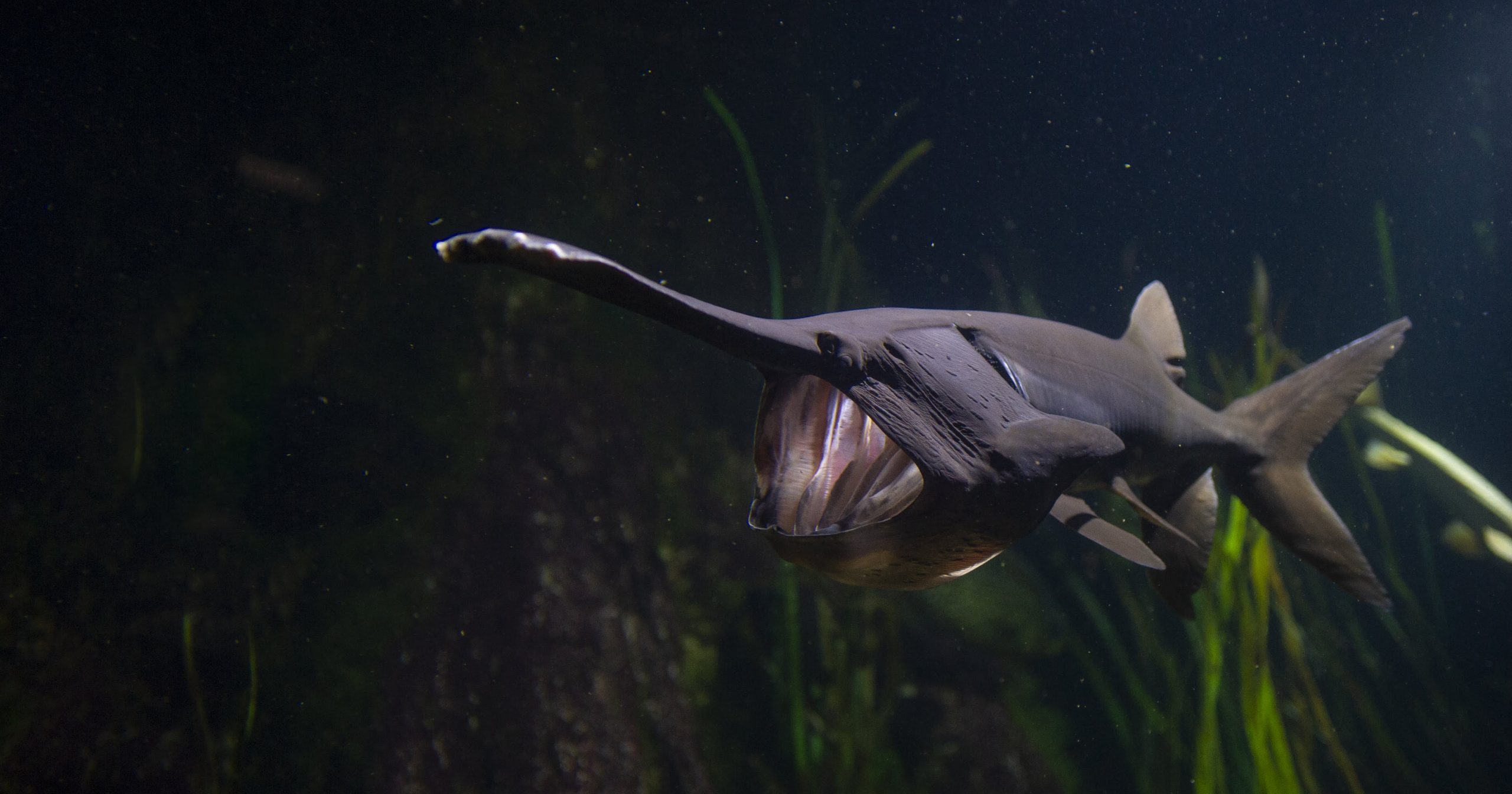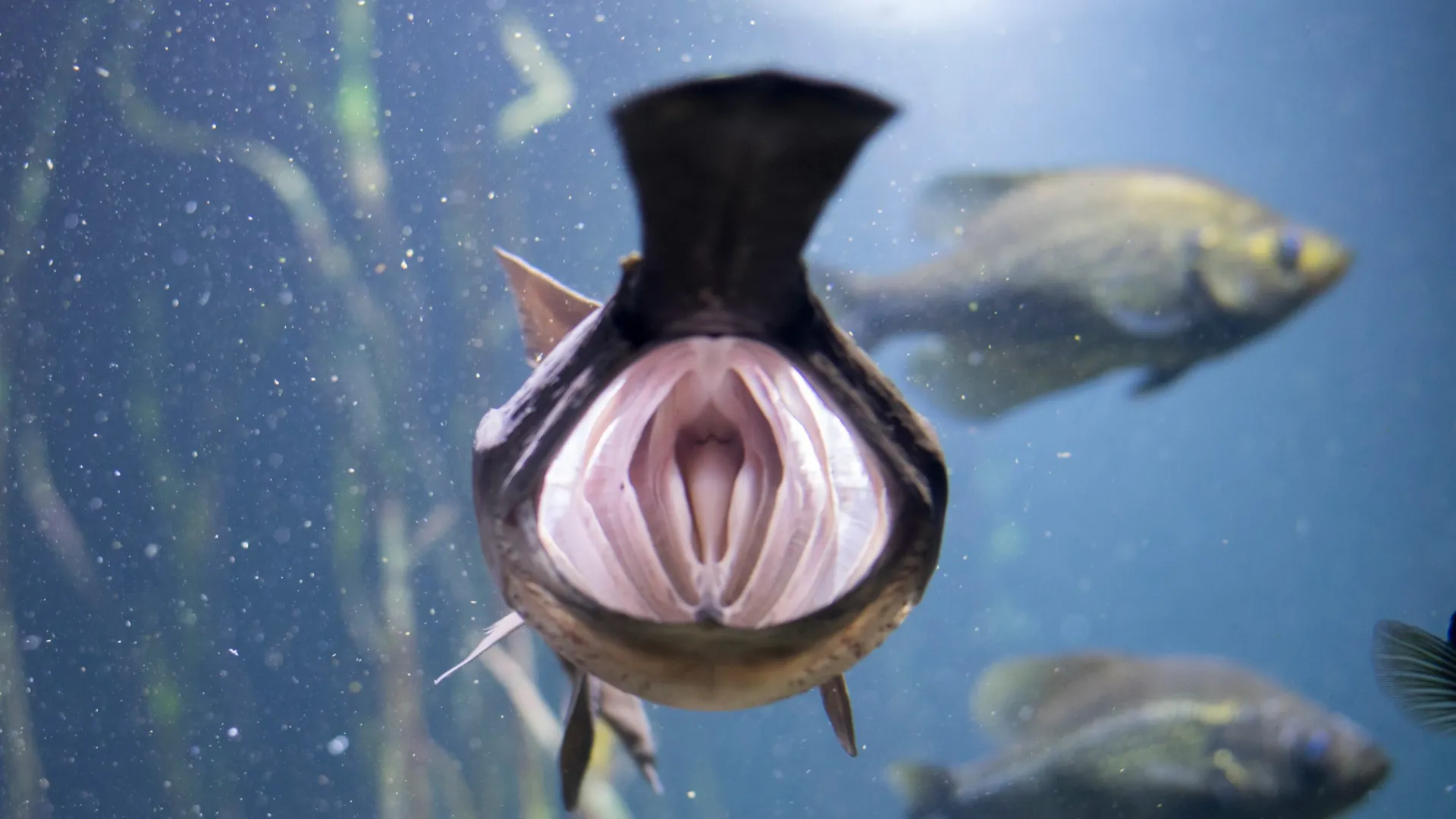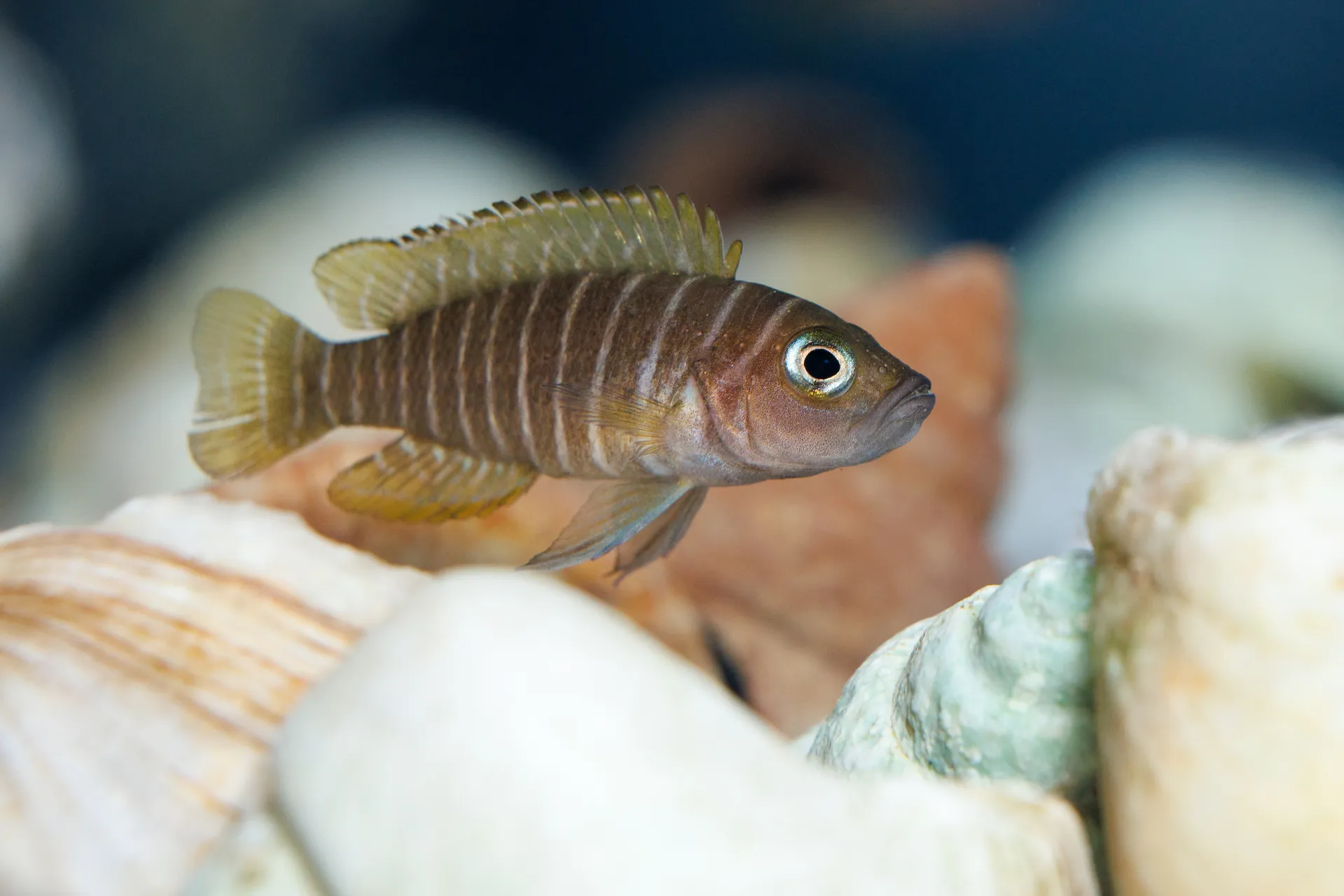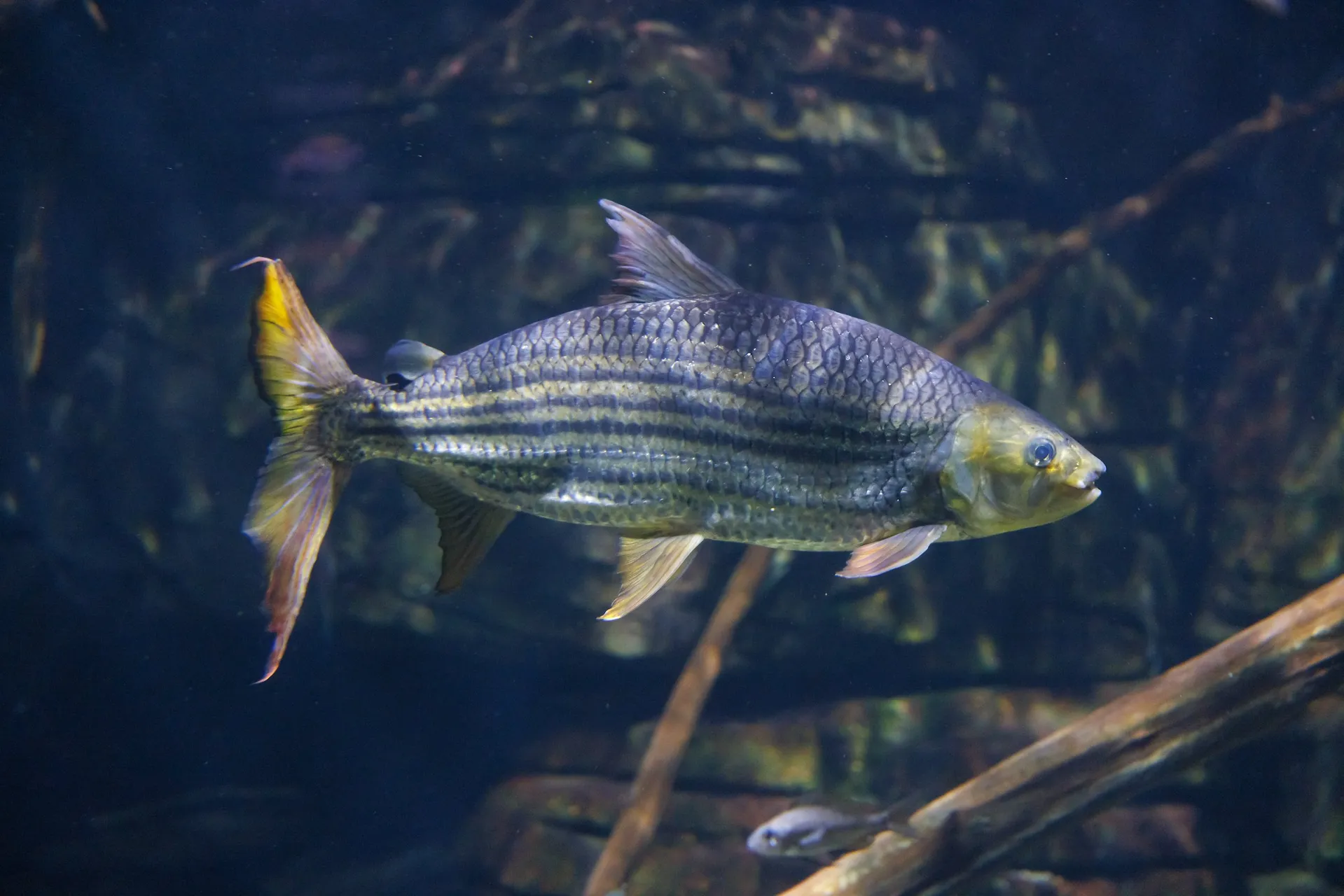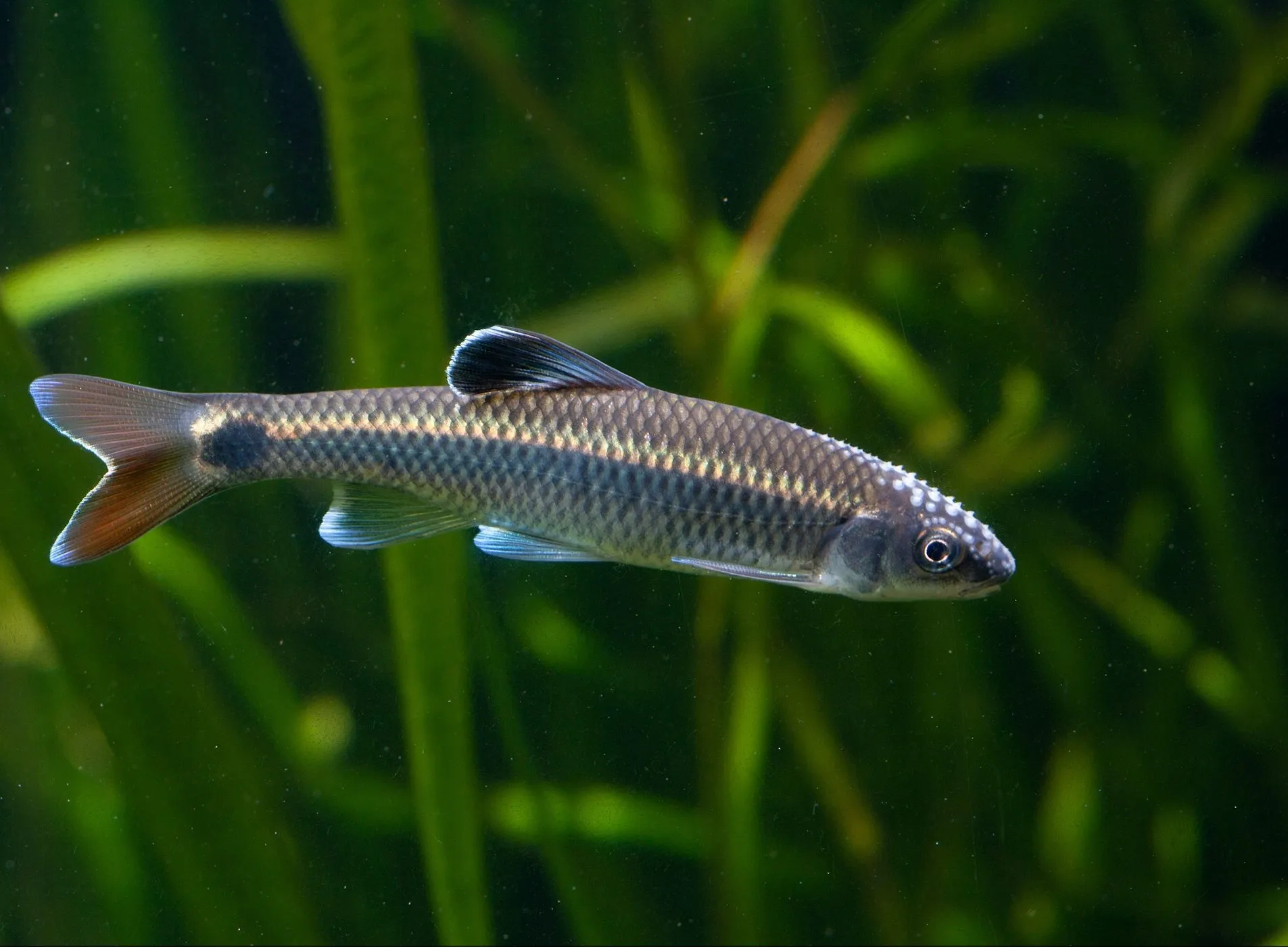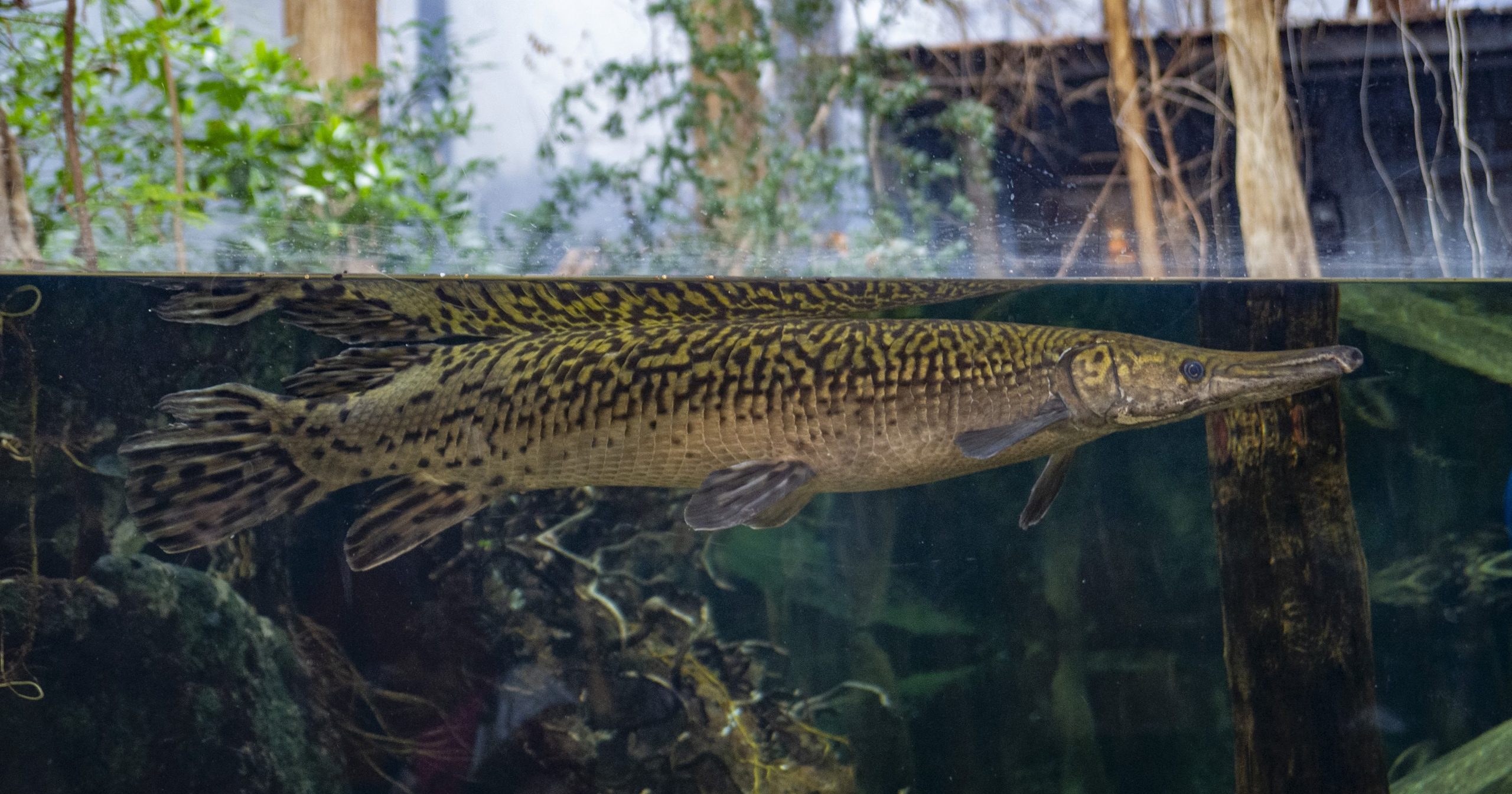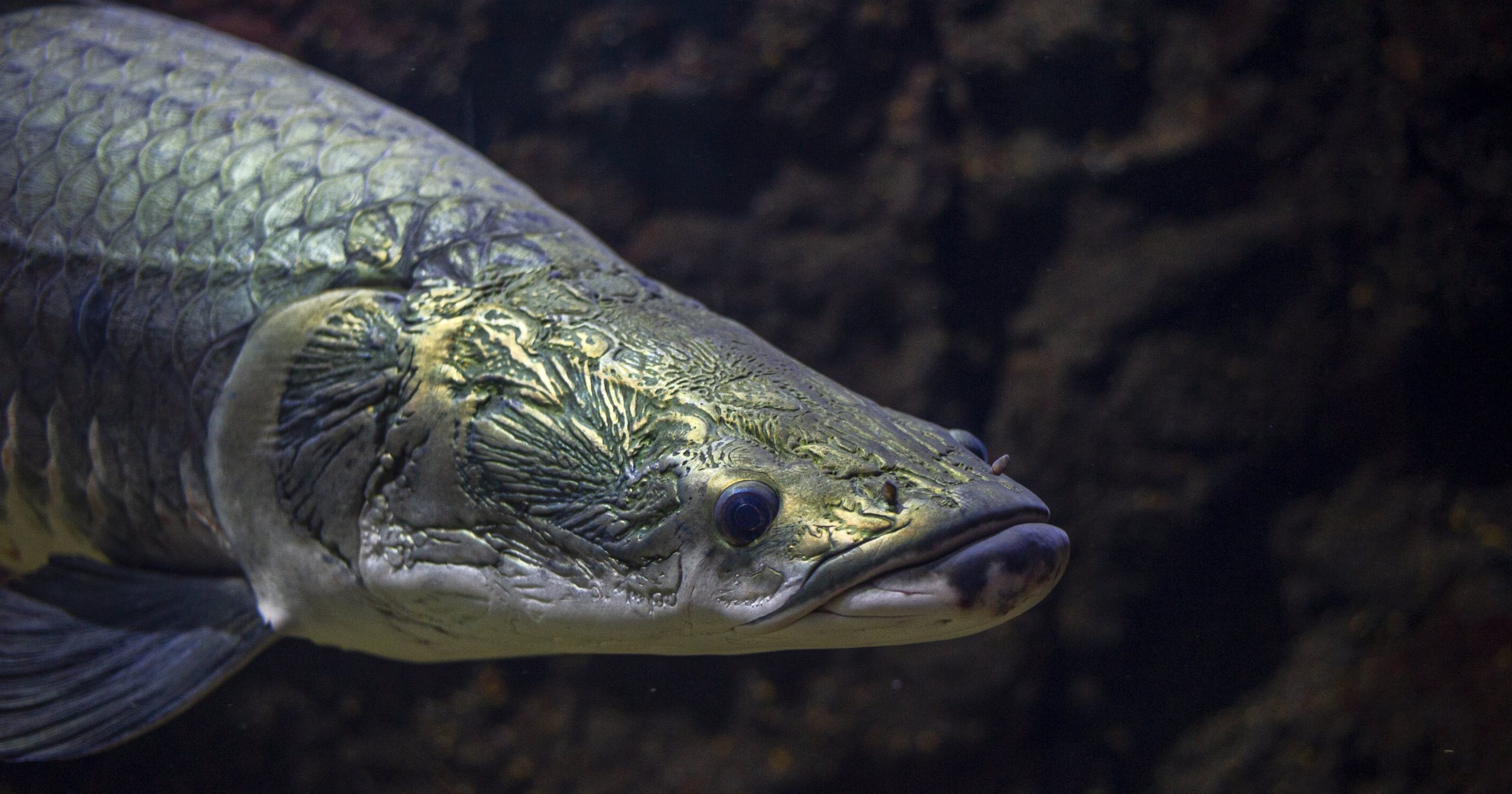On Exhibit
Tennessee River
Paddlefish can live for 60 years or longer. Their fossil records date back over 300 million years, nearly 50 million years before the dinosaurs first appeared.
Despite alternative names such as the Spoonbill Cat and Shovelnose Cat, they are not in the family of catfish. When they were first discovered and described, they were mistakenly identified as a shark. They are in no way related to a shark, but they do share some common characteristics, such as a skeleton primarily composed of cartilage and a deeply forked tail fin with a slightly larger the top fin lobe being slightly larger than the lower fin lobe.
Just like sharks, paddlefish also possess an electro sensory system in their rostrum (paddle shaped snout) and about their head. This is used to detect week electrical fields created by dense populations of zooplankton and to help them avoid obstacles.
Paddlefish are good to eat, and their roe is highly prized in the caviar industry. The most sought-after caviar once came from sturgeon of the Northern Caspian Sea, but overfishing and poaching has caused the collapse of that fishery. More pressure than ever before is being placed on American sturgeon and paddlefish. Thus, paddlefish populations are on the decline everywhere.
According to the IUCN Red List of Threatened Species, it is considered vulnerable.
